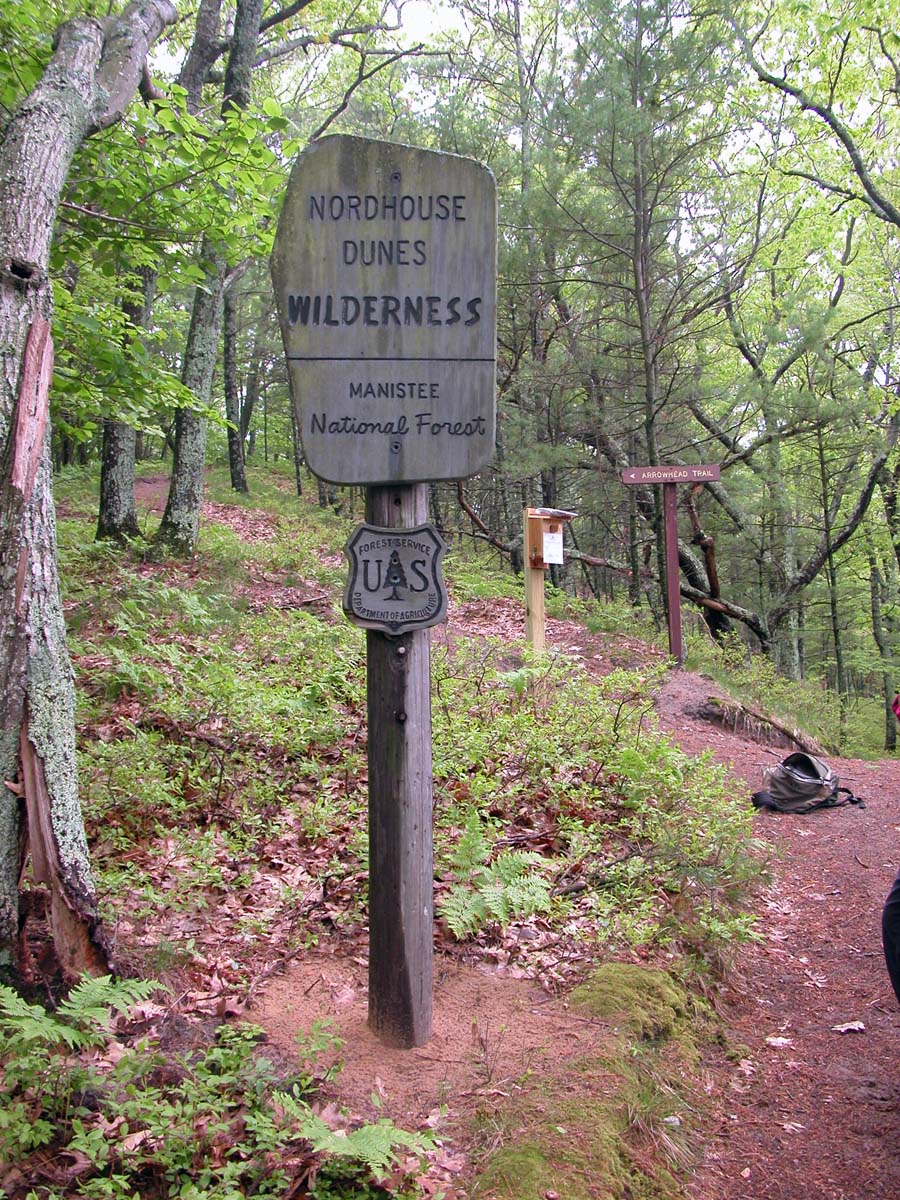By Eric Freedman

Nordhouse Dunes Wilderness in Huron-Manistee National Forest. Credit: U.S. Forest Service
The federal government has launched a five-year study of the National Wilderness Preservation System, but public land agencies say they have no plans for major changes in Michigan’s 16 designated wilderness areas.
The project involves five public agencies. Three of them — the National Park Service, Fish & Wildlife Service and Forest Service — manage land in Michigan.
The best known Michigan sites are Sleeping Bear Dunes Wilderness — the state’s newest — and Nordhouse Dunes Wilderness in the Lower Peninsula. In the Upper Peninsula, Isle Royale Wilderness, the largest in the state, is part of Isle Royale National Park.
The smallest at 12 acres is Michigan Islands Wilderness comprised of three islands in Lake Huron.

Beaver Basin Wilderness in Pictured Rocks National Lakeshore. Credit: National Park Service
Congress designated the Sleeping Bear Wilderness, which covers almost half of Sleeping Bear Dunes National Lakeshore, earlier this year.
Overall, there are 758 wilderness areas in 44 states and Puerto Rico, accounting for almost 5 percent of the U.S. land mass. Visitors are restricted to non-motorized recreation and activities like fishing, hunting, horseback riding and backpacking and to scientific research.
During the next half-decade, the five agencies, including the Bureau of Land Management and U.S. Geological Service, will work with nonprofit groups to protect wilderness resources, connect the public with their wilderness heritage and foster coordination and leadership.
In announcing the project, National Park Service Director Jonathan Jarvis said, “The character of wilderness is unique because of its combination of biophysical, experiential, and symbolic ideals that distinguish it from other protected places.
“Wilderness can be a life-changing experience, and it is part of our mission to preserve wilderness for future generations. Our challenge is to offer this experience to an ever-diversifying public while remaining true to our stewardship mission,” Jarvis said.
Sierra Club of Michigan forest ecologist Marvin Roberson said his organization is generally satisfied with the existing wildernesses in the state.
“Sure, we’d love to have more, but we looked at what was feasible and what was reasonable. We’re not like out West where there are huge areas that were not included and deserve it,” he said.

Credit: Wilderness.net
The one additional wilderness the Sierra Club advocates would be the Trap Hills part of the U.P.’s Ottawa National Forest, south of Porcupine Mountains State Park.
“It’s a special, wonderful area that we think deserves a second look,” Roberson said. According to the Forest Service, Trap Hills, “comprised of large tracts of undisturbed forest, rugged slopes and ridges, streams, waterfalls and ponds, offers solitude and sense of remoteness that is unique in the Great Lakes area.”
However, land agency personnel said they don’t foresee major changes in Michigan.
“We do not have any plans to add acreage to our existing wilderness areas,” said Park Ranger Jennifer McDonough of the U.P.’s Seney National Wildlife Refuge. The refuge is run by the Fish & Wildlife Service and is responsible for the Seney, Huron Island and Michigan Islands wildernesses.
“Management challenges for our existing wilderness lands are fortunately minimal,” she said.
She quoted a 2011 report that said, “The overall condition of the Seney Wilderness is excellent. Refuge management has exerted significant effort to keep the natural systems intact and to allow most natural processes to function freely. The Seney Wilderness requires relatively few management actions, and very little recreational use occurs within its boundaries due to its remote nature.”
As for wilderness users, “it is very difficult to really determine exact number of visitors,” said Lisa Klaus, the public affairs officer at the Ottawa National Forest. The official estimates for 2013 are 92 at Sturgeon River Gorge, 1,221 at McCormick and 8,170 at Sylvania wildernesses, based on vehicles counted at trailheads and visitors who notified the agency office.
“Totals are probably much higher,” Klaus said. “Our greatest time of use is Memorial Day through Labor Day, but we do have some adventurous visitors who enjoy the unique beauty and pristine settings of the wilderness in the winter.”
In the Huron-Manistee National Forest, no undesignated area meets the legal criteria for inclusion in the wilderness system because of minimum size requirements or the presence of such improvements as an earthen dam, public affairs officer Ken Arbogast said.
There are challenges in protecting the existing wildernesses.
Consider Nordhouse Dunes: “For us, it’s a challenge because the wilderness is very accessible. It’s relatively small, and people look at it as kind of a beach area,” Arbogast said. “We do have problems where people aren’t thinking it as a wilderness,” such s cutting green trees for firewood and riding fat-tire bicycles on the sand.
We expect people to respect the area,” he said.
The Sierra Club’s Roberson said money remains a major problem. “Most wilderness areas don’t get patrolled by rangers like we and the Forest Service would like because of funding cuts.”
Roberson said he’s never seen a Forest Service employee in the U.P.’s McCormick Wilderness in the “hundreds of nights” he spent camping there during the past 25 years.

